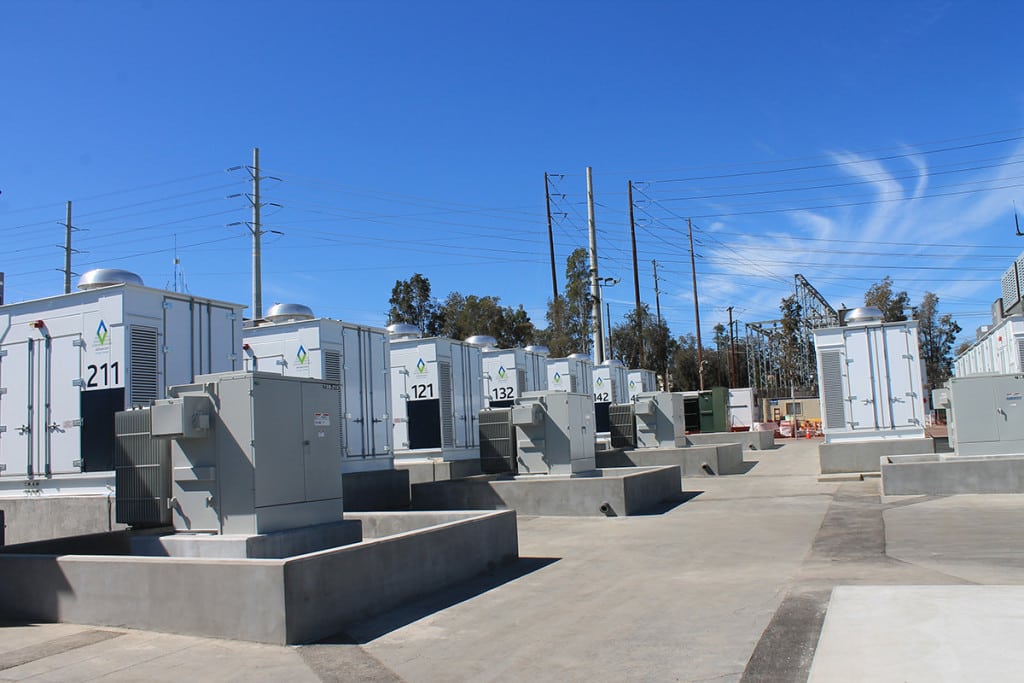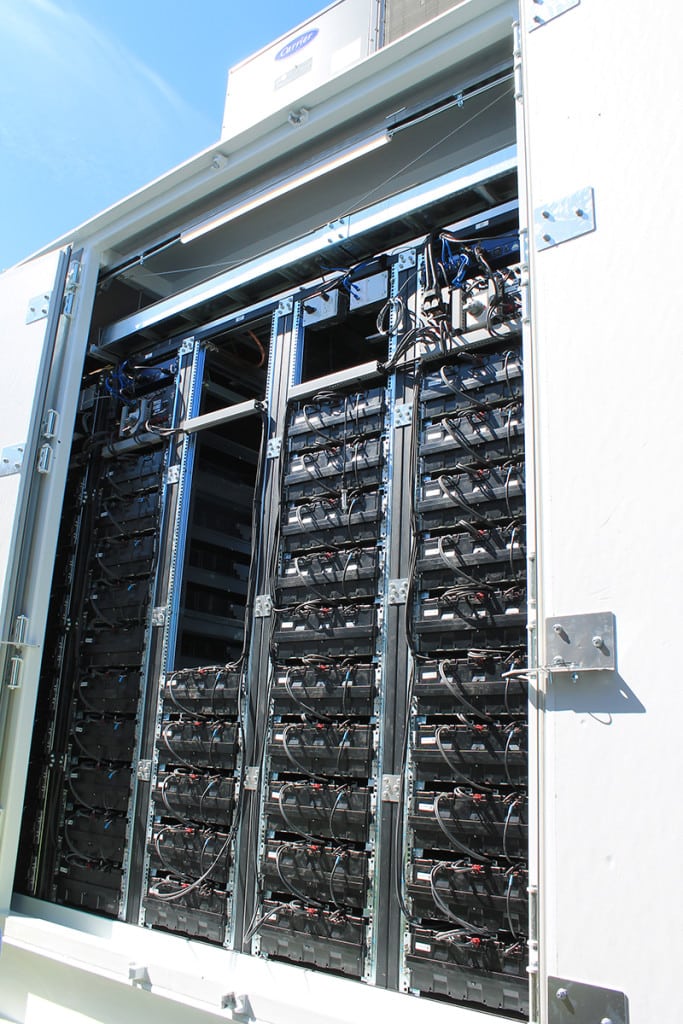California utility San Diego Gas & Electric (SDG&E) on February 24 officially put into service what is currently the largest lithium-ion storage battery in the world, wrapping up a fast-track procurement process that began less than a year ago.
The 30-MW, 120-MWh system (Figure 1) supplied by AES Energy Storage and located in Escondido about half an hour north of San Diego is part of an expedited response by the state and the California Public Utilities Commission (CPUC) to the loss of the Aliso Canyon natural gas storage facility north of Los Angeles last year. The sudden loss of that storage capacity put major constraints on the area’s gas-fired generation and meant that peaker facilities faced the risk of not having gas to run when they were needed.

Gov. Jerry Brown declared a state of emergency over the leak, and the CPUC in May told the state’s utilities to expedite plans for meeting their obligations under the agency’s energy storage mandate. SDG&E had already been evaluating storage options, and after the CPUC request, it opted to move up two of its planned projects.
The Escondido system is one of two SDG&E ordered from AES Energy Storage last June through an expedited procurement process. (The other is a 7.5-MW, 30-MWh system in El Cajon that also went into service this week.) The utility published its request for bids on May 26, the CPUC approved the projects on August 18, and construction began on September 15. A press event on February 24 marked the official start of operations.
The facility will provide grid support for north-central San Diego County. Josh Gerber, SDG&E’s manager of advanced technology integration, told POWER it will serve mainly in a time-shifting role, charging during the day and discharging during the evening (Figure 2).

Though SDG&E has one of the highest levels of penetration for distributed solar of any utility in the continental U.S., with more than 1% of its retail customers operating under net-metering agreements, balancing that generation isn’t the intent of the battery system. “It’s a bulk resource for the grid,” Gerber said.
John Zahurancik, president of AES Energy Storage, said the technology that can meet these roles has changed dramatically a very short period of time. The cost of battery storage systems has fallen 85% since AES’s first project in Huntington Beach, Calif., in 2009, he said.
“If we had faced these challenges just a few years ago, we would be looking at a new gas power plant.”
But building a gas peaker plant for SDG&E would have been a different proposition.
“It would have been harder to locate something like that here,” he said. “You would need to bring in gas, you would need water, and it would have a larger environmental impact on the area. This a much simpler, lower-profile approach.”
Zahurancik said AES Energy Storage was able to meet the expedited schedule because of the supply chains it built in the last few years.
“We had to pull together a lot of batteries in a very short period of time, but we were able to do it because of the relationships we built with our suppliers.”
California has been rolling out some impressively large energy storage projects since the CPUC mandate went into effect. AES is slated to deliver an even larger 100-MW, 400-MWh project in Los Alamitos by 2020, and Tesla recently flipped the switch on a 20-MW, 80-MWh system for Southern California Edison in Mira Loma as part of a deal signed in 2015.
“This project is evidence that California is moving into a post-renewable world,” Michael Picker, CPUC president said.
—Thomas W. Overton, JD is a POWER associate editor (@thomas_overton, @POWERmagazine).
Slider photo courtesy: SDG&E










